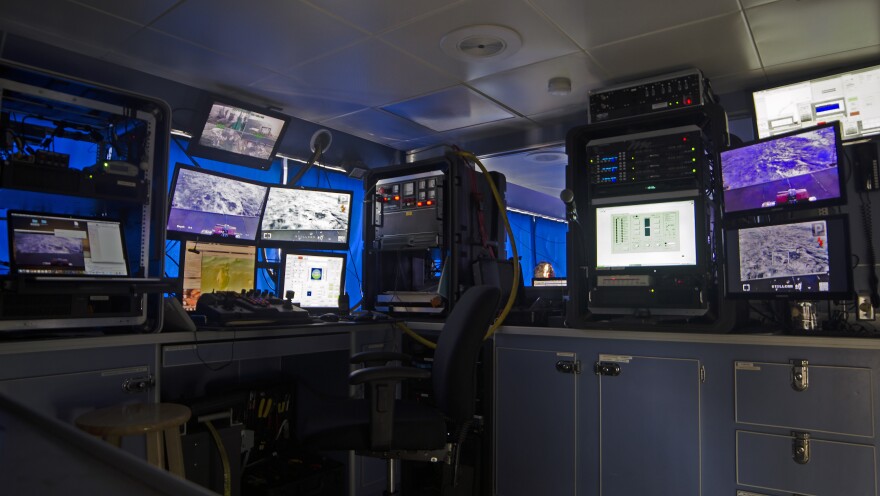The wreckage of the Titan submersible carrying five people to see the Titanic was found yesterday afternoon. It had been missing since Sunday, and in its effort to locate the sub, the U.S. Coast Guard deployed a range of sophisticated technology to survey the ocean floor. Planes, sonar buoys, and remotely operated vehicles (ROVs) scanned an area as large as Connecticut.
The U.S. Coast Guard obtained an ROV Thursday that could reach the Titanic at 12,000 feet underwater, and hours later, Titan’s remnants were identified.
Jason White and Samantha Flounders are two ROV drivers at UNC-Wilmington's Underwater Vehicles Program. They were not involved in the search mission but have decades of experience driving ROVs for research purposes. They spoke to PRE’s Ryan Shaffer about the technology, how it’s used and how it further scientific research.
###############################
When I spoke with White and Flounders Thursday before the Titan's wreckage was found, they were preparing for a month long expedition to the Gulf of Mexico, where they'll be surveying soft coral reefs affected by the Deep Horizon oil spill and collecting samples. They're part of a team at UNC-Wilmington that is contracted to drive ROVs in research expeditions.
Though they were not involved with the search for the Titan, they spoke to how ROVs are used, their strengths, and their limitations.
Samantha Flounders says one benefit of an ROV is that its operated by a human who remains topside, aboard the ship, while the ROV dives to the ocean floor.
"An ROV is obviously not limited by any oxygen capacity. It can obviously go deeper than scuba divers, so no time limits or restrictions," she said. “The only limit being how long the pilot can pay attention.”
Theoretically, the ROV can be exploring all day, but White and Flounders each take a day lasting no longer than 12 hours.
ROVs are equipped with cameras and lights to send real-time photos back to the surface crew. Depending on how deep it goes, it can be as small as a computer or as large as a truck. The ROVs Flounders and White work with can go to a depth of 500 meters, so it's on the smaller end. The vehicles used in search of the Titan need to reach 12,000 feet. They're much larger and are piloted by a crew of up to a dozen people.

To maintain communication with the ROV, a long, half-inch thick cord is attached that carries electricity and sends signals back and forth.
"There's an umbilical cord that we have attached,” White said, adding that six fiber optic cables run through that cord. “One of those talks to the brains of the ROV, one is dedicated to the camera, and one is dedicated to collections."
The ROV can only go as far as the ‘umbilical’ allows. The biggest limitation with using an ROV, says White, is the weather. The ROV White works with cannot travel more than half a knot, and because its tethered, the surface ship has to remain at a fixed position. Inclement weather and rough seas can make it hard for the ship to keep position.

"You can't move more than a quarter of a knot because if you're going quicker than that, you can't see what you're looking at because the cameras. You're riding the knot under the water and you can't see what you're looking at basically."
The weather was cooperative for the search, and the U.S. Coast Guard deployed a handful of ROVs and planes to scan a 5,000 sq. mile area.
ROVs are not designed for search and rescue missions. They're designed for research, data collection, and sampling. But it was the best tool available.
For the science community, ROVs are handy instruments used to explore Earth’s final frontier. Right now, White and Flounders are in the Gulf of Mexico collecting samples of coral affected by the 2010 BP oil spill.
"A lot of our studies involve actually bringing back items to do genetic tests on,” Flounders said, adding that for their current expedition, they’ll be testing and comparing the impacted and nonimpacted coral.




